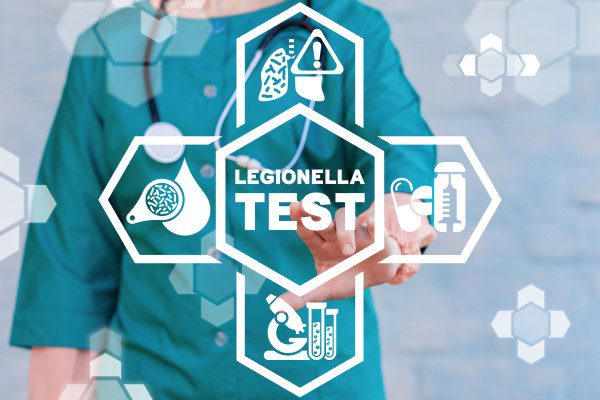
In Ohio, where temperature shifts and older infrastructure can challenge water safety, preventing Legionella is a must—not a maybe. This blog outlines the proactive steps facility managers, building owners, and healthcare providers across the state can take to reduce the risk of Legionella outbreaks in compliance with both state and federal guidance.
With proper temperature control, disinfection, biofilm management, and regular system maintenance, you can stay ahead of risk and keep your Ohio facility safe and compliant.
Legionella bacteria thrive between 77°F and 113°F, especially around 95°F—conditions that can easily occur in Ohio buildings during spring and summer. That’s why it’s critical to keep hot water above 120°F and cold water below 68°F.
Facilities across Ohio—especially hospitals, nursing homes, and large campuses—should routinely monitor water temperatures. This simple step prevents dangerous conditions and ensures compliance with Ohio Department of Health (ODH) water safety expectations.
Biocide treatment is a key part of Legionella prevention. In Ohio, facilities commonly use chlorine, monochloramine, or chlorine dioxide, depending on local water chemistry and system design.
To be effective, disinfection must be consistent. Under-dosing or irregular application can leave Ohio water systems vulnerable, especially in rural or aging plumbing networks. Regular monitoring ensures biocide levels meet safety standards.
Ohio’s fluctuating climate can contribute to biofilm formation inside plumbing systems—thin layers of bacteria that protect Legionella from disinfection. These films are often found in pipes, tanks, and storage systems.
To manage biofilms, implement routine flushing, mechanical cleaning, and use of biocides and scale inhibitors. This is especially important in Ohio’s healthcare environments, where immunocompromised populations are at greater risk.
Stagnant water is a real problem in Ohio buildings—especially in seasonal facilities, low-use areas, or older schools. Left unchecked, stagnant zones provide the perfect environment for Legionella.
Ohio-based facility managers should regularly flush seldom-used outlets and inspect components like cooling towers and hot water tanks. Preventative maintenance is key to safe and reliable water systems statewide.
Legionella prevention in Ohio isn’t about one-time fixes—it’s about consistency. By maintaining temperature control, applying biocides, managing biofilms, and flushing systems regularly, you reduce health risks and meet Ohio-specific standards for water safety.
With the right prevention strategies, Ohio buildings can protect their occupants, meet health guidelines, and avoid costly Legionella outbreaks.
Adeline Johnston is the Marketing and Communications Specialist at ChemREADY where she leads brand strategy, content development, and customer engagement efforts. With a background in digital marketing and a focus on education, Adeline creates targeted campaigns and multimedia resources that support ChemREADY’s full range of services, including Legionella management, ANSI/AAMI ST108 compliance, boiler and cooling tower treatment, wastewater processing, and industrial water quality solutions. Passionate about making complex topics accessible, she plays a key role in helping clients stay informed, compliant, and confident in their water treatment programs.